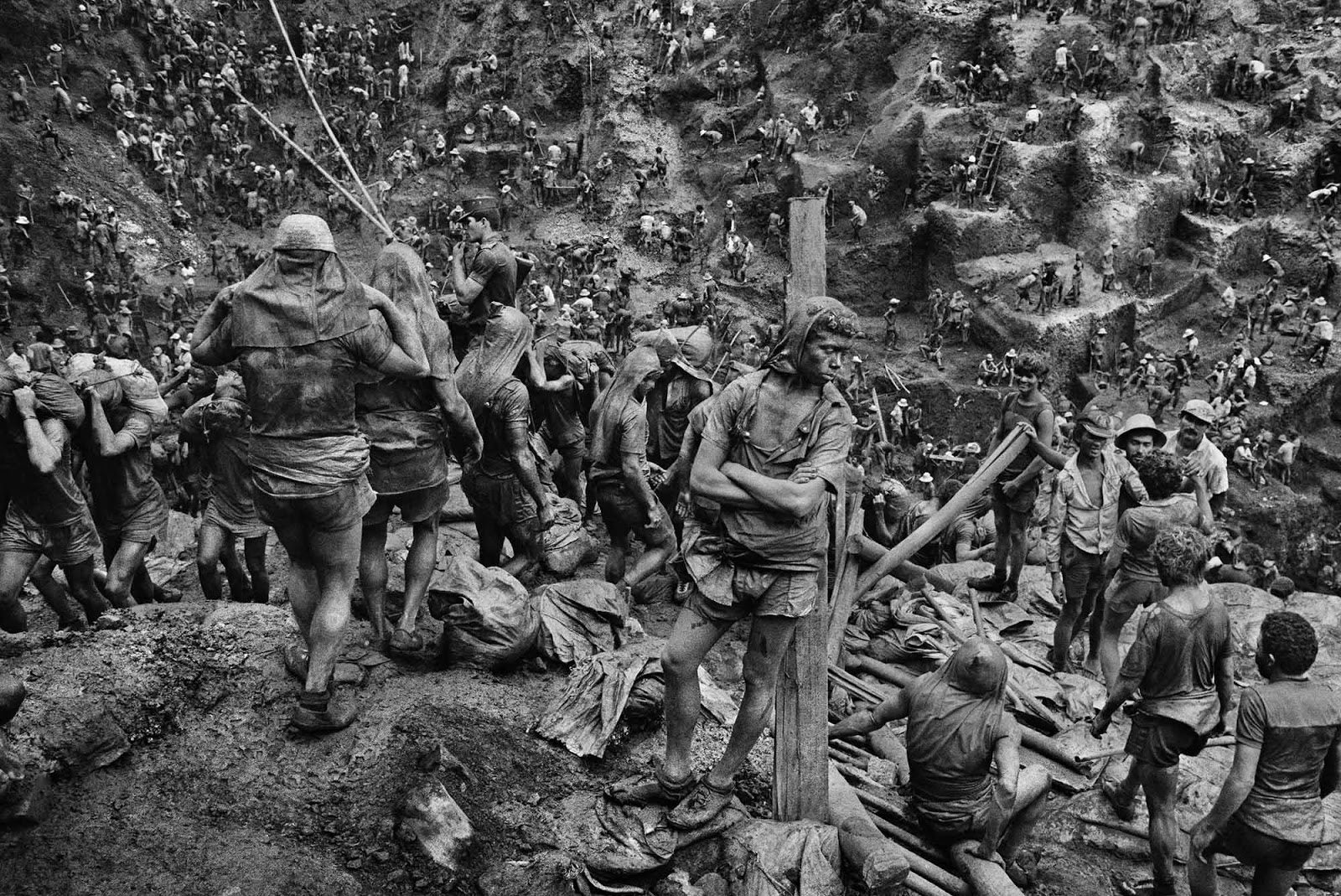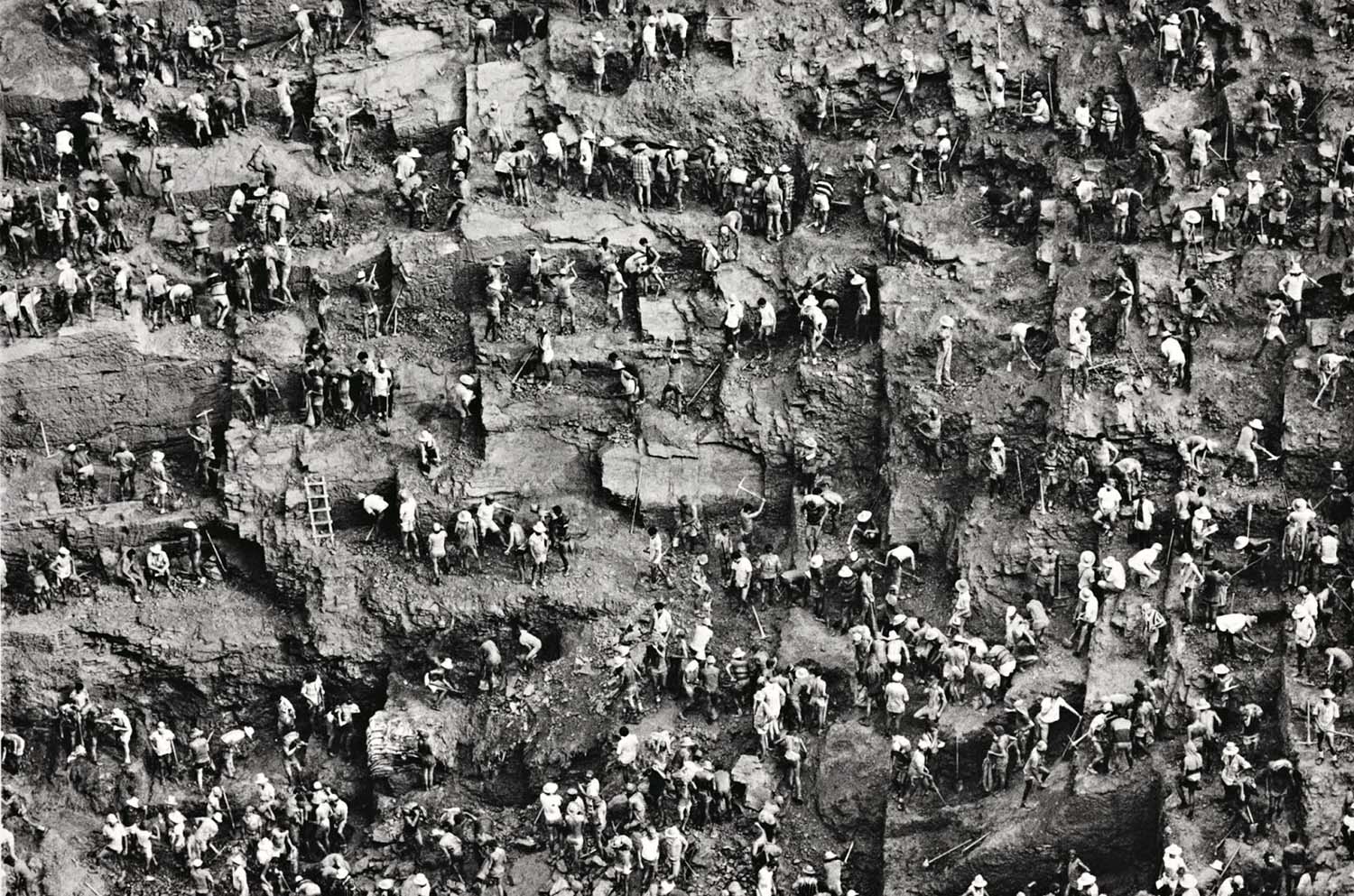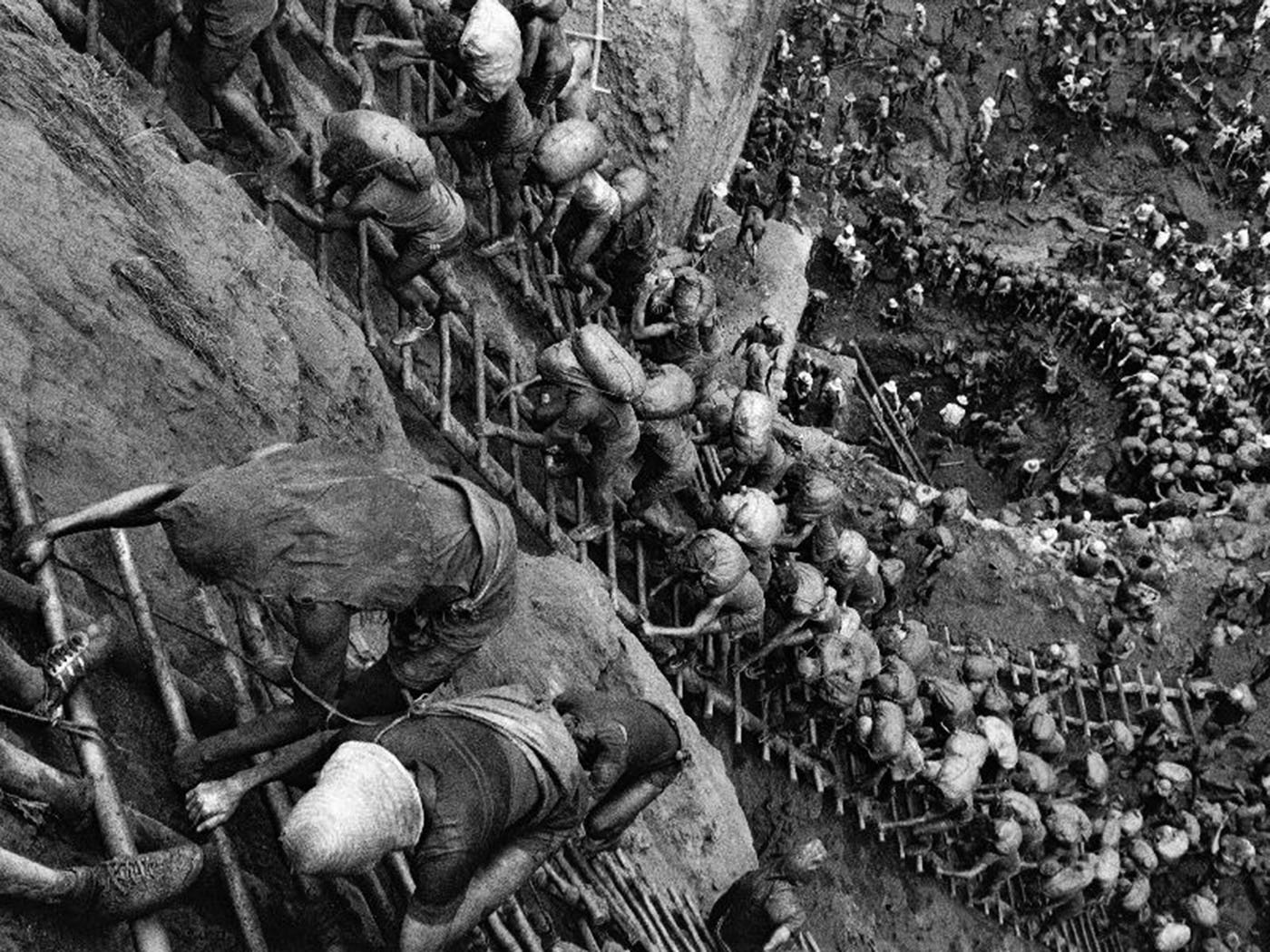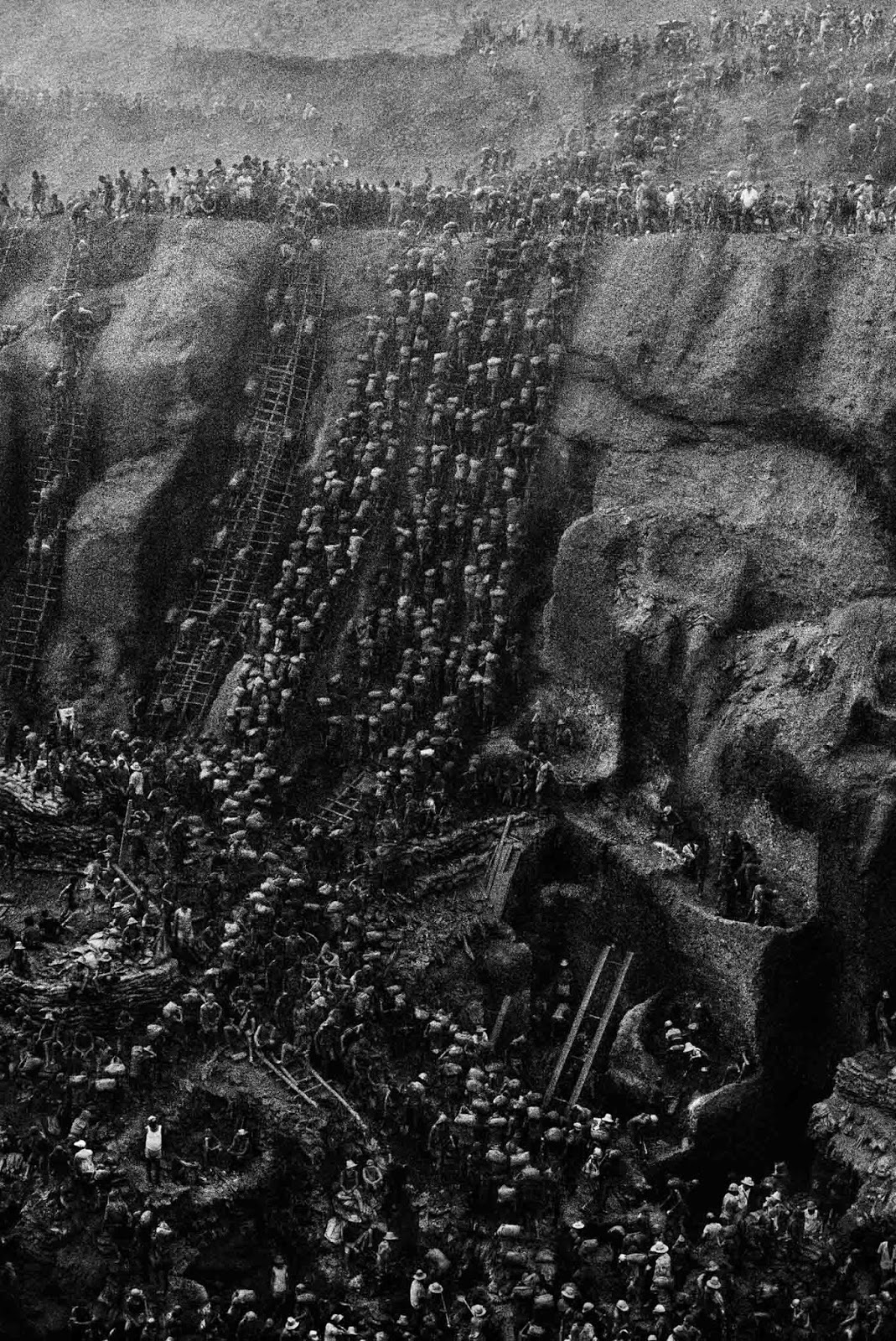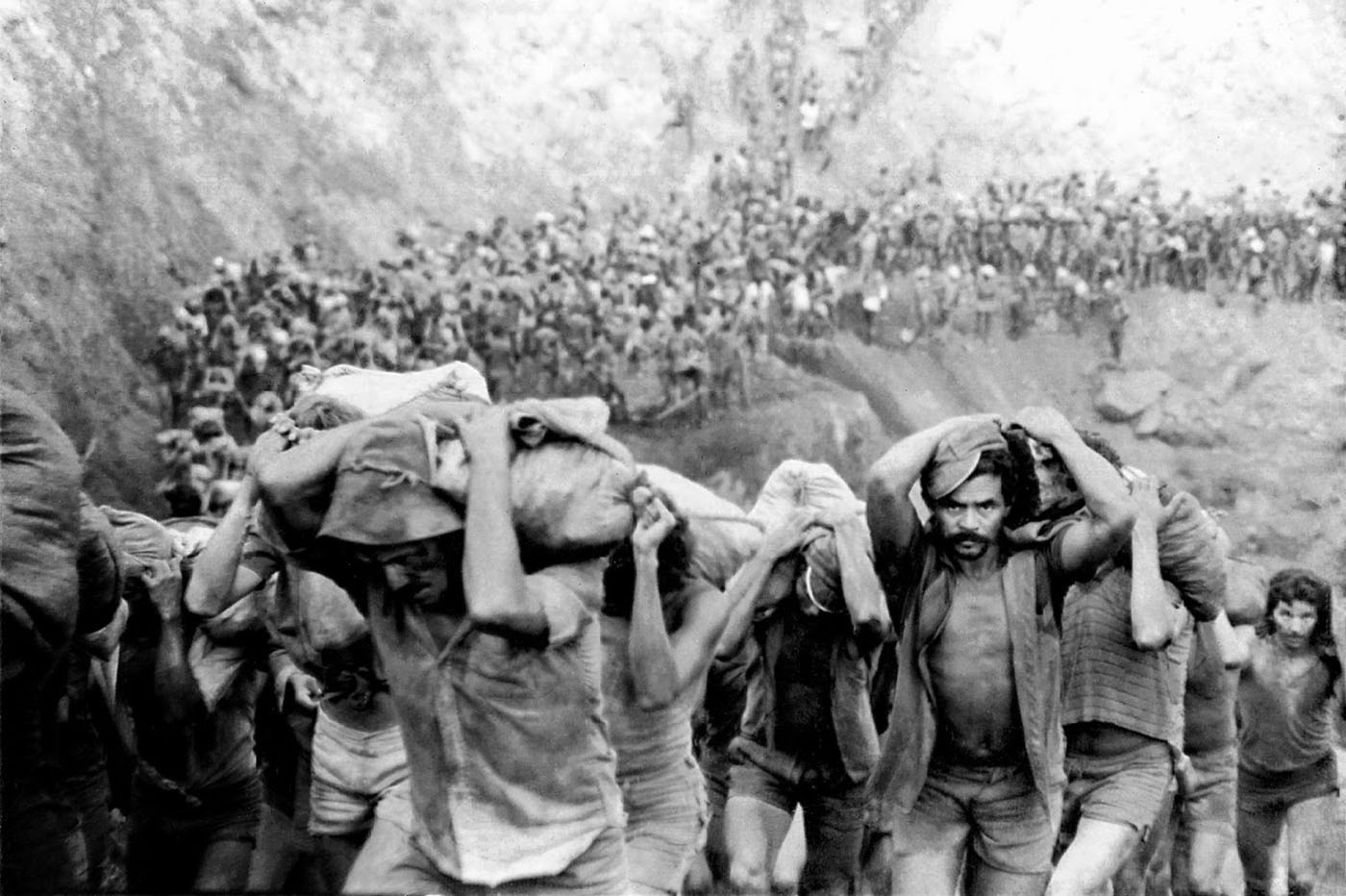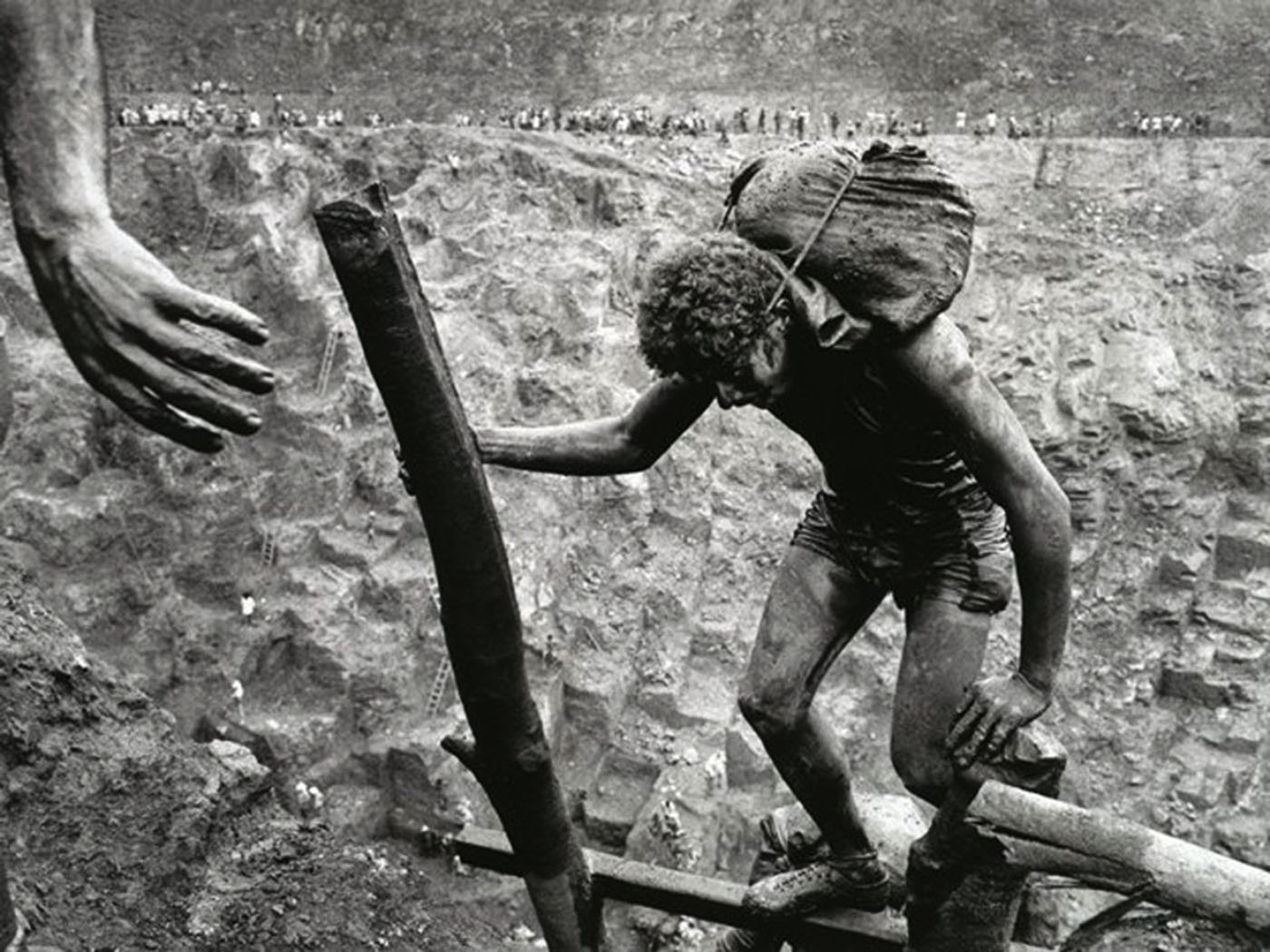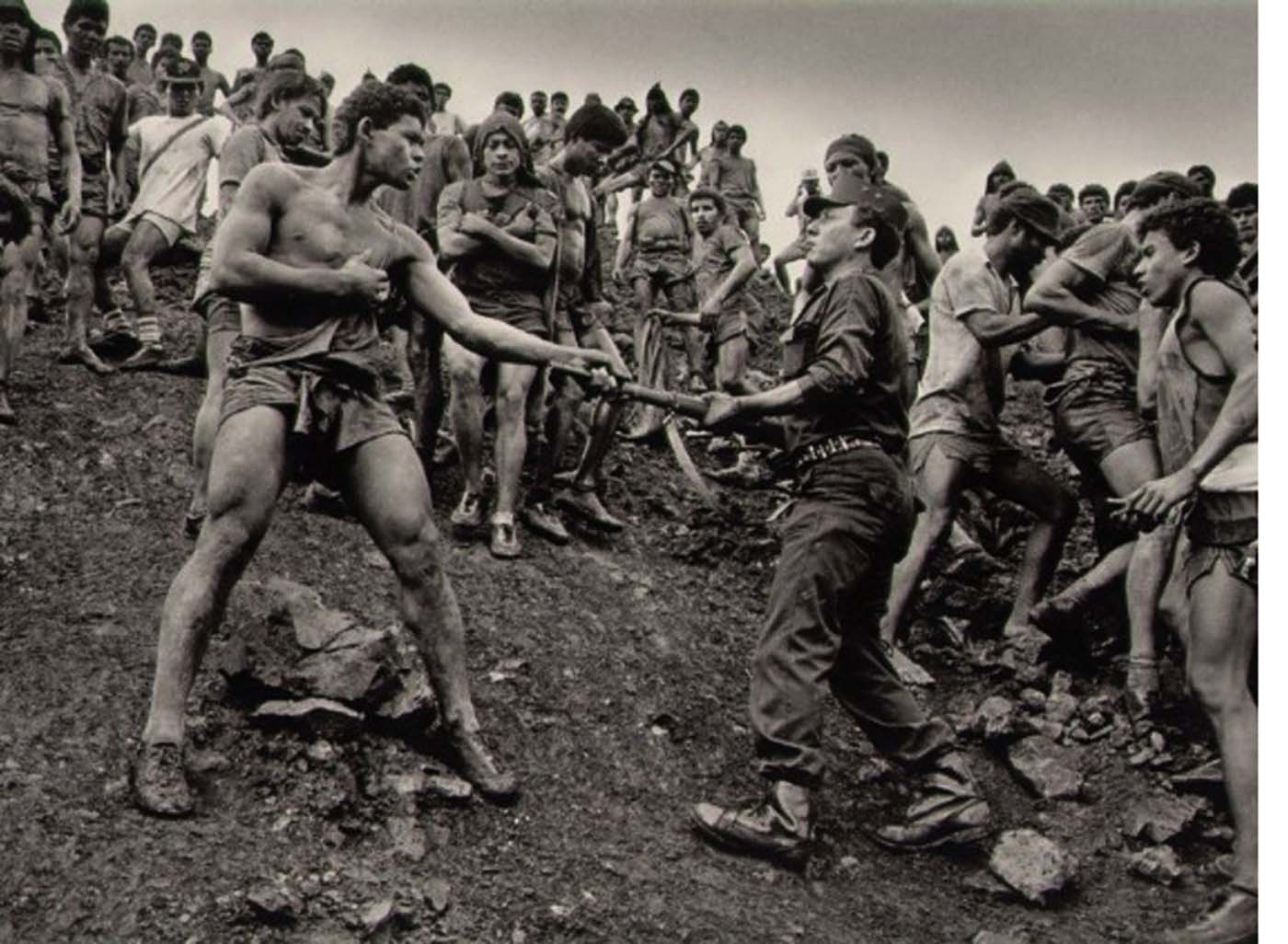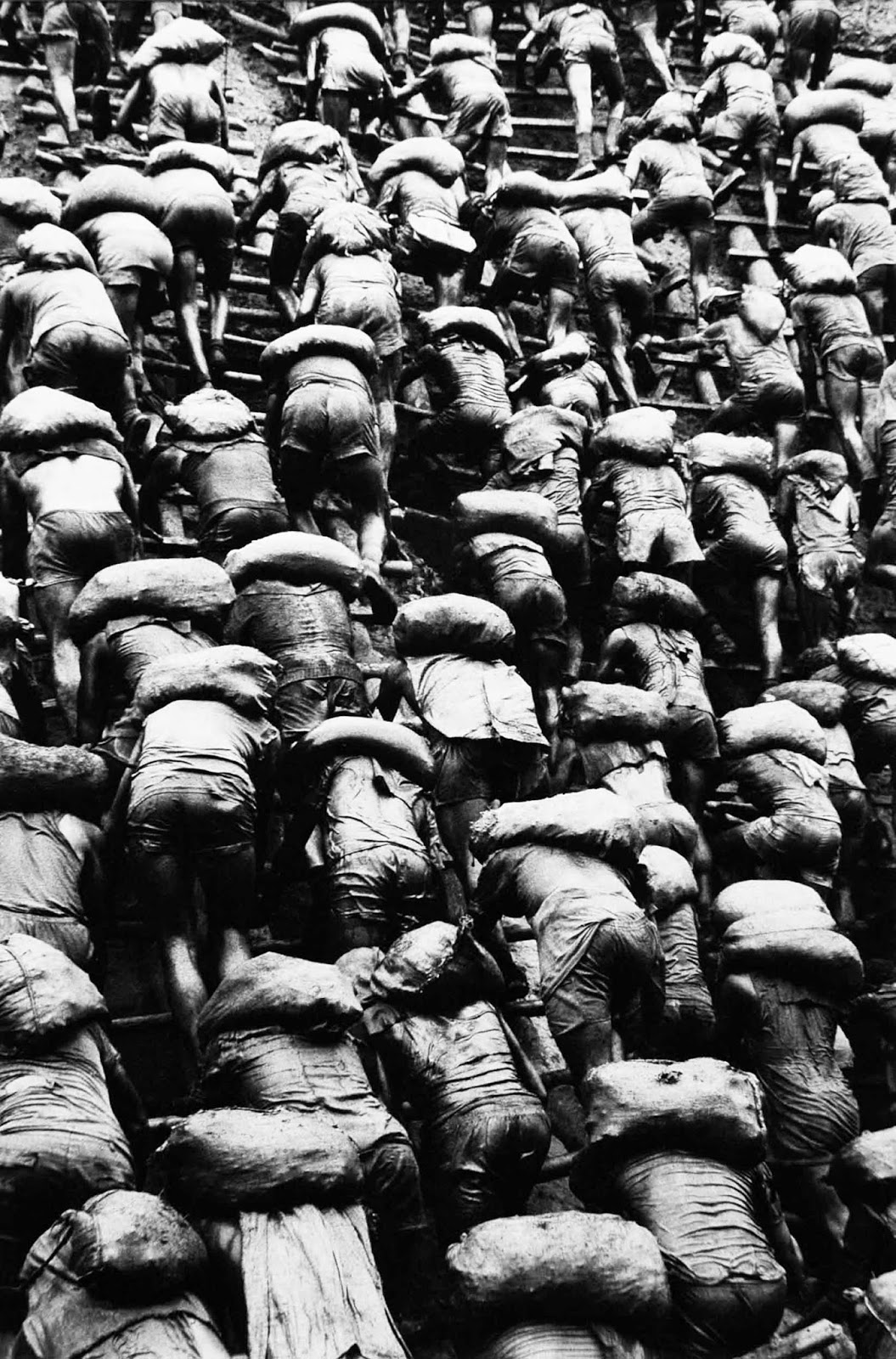Soon word leaked out and by the end of the week, a gold rush had started. During the early 1980s, tens of thousands of prospectors flocked to the Serra Pelada site, which at its peak was said to be not only the largest open-air gold mine in the world but also the most violent. At first, the only way to get to the remote site was by plane or foot. Miners would often pay exorbitant prices to have taxis drive them from the nearest town to the end of a dirt track; from there, they would walk the remaining distance—some 15 kilometers (9.3 mi) to the site. Huge nuggets were quickly discovered, the biggest weighing nearly 6.8 kilograms (15 lb), $108,000 at the 1980 market price ( now $ 310,173 in 2016). During the peak of the gold rush, the mine was known for appalling conditions and violence, whilst the town that grew up beside it was notorious for both murder and prostitution. Brazilian photographer Sebastião Salgado traveled to the mines of Serra Pelada taking some of the most haunting pictures of the workers there, highlighting the sheer madness and chaos of the operation. He’s quoted as saying when he saw the mine, “Every hair on my body stood on edge. The Pyramids, the history of mankind unfolded. I had traveled to the dawn of time”. This is how Sebastião Salgado described the mine during an interview in 1992: Swept along by the winds that carry the hint of fortune, men come to the gold mine of Serra Pelada. No one is taken there by force, yet once they arrive, all become slaves of the dream of gold and the need to stay alive. Once inside, it becomes impossible to leave. Every time a section finds gold, the men who carry up loads of mud and earth have, by law, the right to pick one of the sacks they brought out. And inside they may find fortune and freedom. So their lives are a delirious sequence of climbs down into the vast hold and climb out to the edge of the mine, bearing a sack of earth and the hope of gold. Anyone arriving there for the first time confirms an extraordinary and tormented view of the human animal: 50,000 men sculpted by mud and dreams. All that can be heard are murmurs and silent shouts, the scrape of shovels driven by human hands, not a hint of a machine. It is the sound of gold echoing through the soul of its pursuers. In the pictures, there can be seen a lot of blocky areas, this is actually because for each miner it was assigned a 2mx2m area. People would just dig down (because that’s all they could do). This became a safety hazard because they didn’t know if the person who was assigned the 2mx2m lot next to them was still alive and digging down on their area. If they weren’t digging, then all the blocks around them would go deeper and deeper until that person’s block became structurally unsafe and would collapse, killing workers it collapsed on. During its peak, the Serra Pelada mine employed some 100,000 diggers or garimpeiros in appalling conditions, where violence, death, and prostitution were rampant. The diggers scratched through the soil at the bottom of the open pit, filled it into sacks each weighing between 30 to 60 kilograms (65 and 130 pounds), and then carried the heavy sacks up some 400 meters of wood and rope ladders to the top of the mine, where it is sifted for gold. Because they work in mud, the gold diggers were called “mud hogs”. On average, workers were paid 20 cents for digging and carrying each sack, with a bonus if gold was discovered. Three months after the gold’s discovery, the Brazilian military took over operations to prevent exploitation of the workers and conflict between miners and owners. Before the military takeover, basic goods were sold for hugely inflated prices by the mine owners; water cost $3 a liter ($ 8.62 in 2016). The government agreed to buy all the gold the garimpeiros found for 75 percent of the London Metal Exchange price. Officially just under 45 tons of gold was identified, but it is estimated that as much as 90 percent of all the gold found at Serra Pelada was smuggled away. Using today’s prices that equates approximately to 1.5 billion dollars. While the military government banned women and alcohol at the actual mine, the nearby town became a town of “stores and whores”. Thousands of underage girls prostituted themselves for gold flakes while around 60–80 unsolved murders occurred in the town every month. Rita Cadillac, a Brazilian dancer famous for being sexy, was invited to do a show in Serra Pelada to please the men there. She said she was terribly afraid because she was the only woman in the whole place, and there was no security. In the show, there was a moment she felt that she was not pleasing the men because they were throwing stones at her. Only later she realized that they were throwing gold at her. Because of the use of mercury in the gold extraction process, large areas around the mine are considered dangerously contaminated. People eating fish downstream from the mine have elevated mercury levels. Mining had to be abandoned when the pit became flooded preventing further exploration. Geological surveys estimate that there could still be 20 to 50 tons of gold buried under the muddy lake, which the pit has now become. The 1988 film Powaqqatsi opens with footage of the Serra Pelada mine. In the beginning, chapter men are seen carrying bags of dirt up to a destination. In the middle of the chapter, various shots outside of Serra Pelada are shown. Near the end of the chapter, a few men are carrying another man who was struck by a falling uphill along a procession of workers who are carrying dirt-filled sacks. (Photo credit: Sebastião Salgado). Notify me of new posts by email.
Δ Subscribe

